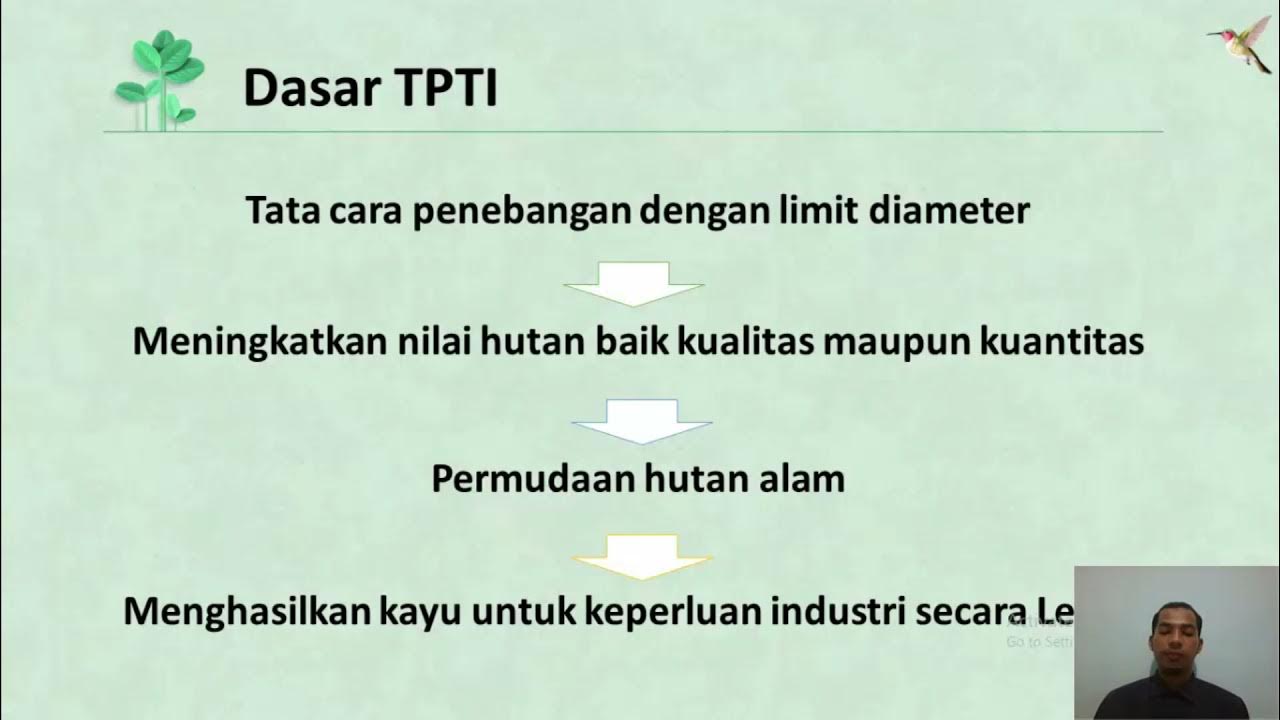Forestry for the Future: Lessons in Sustainable Management from Maine
Summary
TLDRThe video script from the University of Maine School of Forest Resources delves into forest management, showcasing various techniques like clear-cutting, shelterwood thinning, and selection cutting. It emphasizes the importance of sustainable practices, wildlife habitat, and addressing climate change through forestry. The script features interviews with foresters and researchers, highlighting the balance between ecological health and human objectives in managing forests for future generations.
Takeaways
- 🌲 The script discusses the personal journey of someone who started with a passion for forests and eventually sought professional knowledge in forestry management.
- 📚 It highlights the importance of education in forestry, emphasizing the value of attending classes at the University of Maine to learn about forest management.
- 🔍 The video script introduces various silvicultural treatments like clear-cutting, shelterwood thinning, selection cutting, and irregular shelterwood cutting, showcasing the range of options available for forest management.
- ❓ It addresses the concept of exploitative harvesting, which involves taking out the most valuable trees without considering the long-term sustainability of the forest.
- 🌳 The script explains even-aged management, which involves regenerating the next cohort of trees all at once, leading to a uniform forest stand.
- 🏞️ It contrasts even-aged management with uneven-aged systems, where trees of many different ages coexist, creating a more complex and diverse forest structure.
- 🐦 The importance of forest management for wildlife habitat is discussed, with a focus on creating conditions that support a variety of bird species and other wildlife.
- 🌱 The script touches on the impact of past exploitive harvesting practices on current forest composition and health, and how these practices have led to a shift towards more sustainable management strategies.
- 🌤️ It discusses the role of forestry in addressing climate change, emphasizing the potential of forests to store carbon and the importance of managing forests to enhance this capacity.
- 👨🏫 The value of consulting with foresters for landowners is highlighted, as they can provide guidance on creating management plans, conducting timber inventories, and addressing ecological concerns.
- 🚫 The script also mentions the various regulations that affect forestry in Maine, emphasizing the complexity of managing forests and the need for professional guidance to navigate these rules.
Q & A
What is the main goal of the person speaking in the script?
-The main goal of the person speaking is to manage and take care of their forest in a way that promotes both the health of the forest and the well-being of wildlife, while also producing saw logs for the mill.
What role does the University of Maine School of Forest Resources play in the script?
-The University of Maine School of Forest Resources is involved in educating and assisting with forest management. They offer forestry classes and develop management plans, contributing to the knowledge and practices of forest management.
What is silviculture and how does it relate to the script?
-Silviculture is defined as the art and science of managing forests for desired outcomes. It is central to the script as it discusses various silvicultural treatments such as clear-cutting, shelterwood thinning, and selection cutting, which are used to manage forests sustainably.
What are the different silvicultural treatments mentioned in the script?
-The script mentions several silvicultural treatments including clear-cutting, shelterwood thinning, selection cutting, irregular shelterwood, and exploitative harvests.
How does even-aged management differ from uneven-aged management in the context of the script?
-Even-aged management refers to techniques where the next cohort of trees is regenerated all at once, leading to a uniform forest age. Uneven-aged management, on the other hand, involves having trees of many different ages in the forest at the same time, which requires careful long-term management to achieve.
What is the significance of pre-commercial and commercial thinning as mentioned in the script?
-Pre-commercial and commercial thinning are stand tending activities that involve removing smaller trees to reduce competition and allow better trees to grow. This practice helps in creating an open forest structure and improves the overall health and quality of the forest.
How does the script address the issue of wildlife habitat in forest management?
-The script addresses wildlife habitat by discussing the importance of maintaining a diverse forest with multiple layers of vegetation, gaps for bird species, and the presence of old trees and snags. It also mentions the decline in bird species and how certain forest management practices can help support their habitats.
What is the impact of exploitative harvesting on forest health as described in the script?
-Exploitative harvesting, or high grading, focuses on taking the most valuable trees without considering the future sustainability of the forest. This practice can lead to a decline in forest health, with poor-quality trees dominating the stand and a loss of valuable species like spruce and hemlock.
How does the script suggest managing an uneven-aged forest to improve its condition?
-The script suggests creating small gap openings in the forest to allow more light and encourage the growth of different aged and sized trees. It also recommends thinning out lower quality trees to allow healthier ones to grow bigger and older.
What advice does the script give to landowners regarding forest management and planning?
-The script advises landowners to work with foresters who can help set priorities, prepare management plans, conduct timber inventories, and address issues like wildlife, invasive species, and water quality. It emphasizes the importance of understanding the outcomes of different management practices.
Outlines

このセクションは有料ユーザー限定です。 アクセスするには、アップグレードをお願いします。
今すぐアップグレードMindmap

このセクションは有料ユーザー限定です。 アクセスするには、アップグレードをお願いします。
今すぐアップグレードKeywords

このセクションは有料ユーザー限定です。 アクセスするには、アップグレードをお願いします。
今すぐアップグレードHighlights

このセクションは有料ユーザー限定です。 アクセスするには、アップグレードをお願いします。
今すぐアップグレードTranscripts

このセクションは有料ユーザー限定です。 アクセスするには、アップグレードをお願いします。
今すぐアップグレード関連動画をさらに表示

SISTEM SILVIKULTUR||Macam-macam Sistem Silvikultur yang Diterapkan di Indonesia serta penerapannya||

Forestry and Rangelands

TEKNIK SILVIKULTUR ||Memahami apa sih Teknik Silvikultur Itu? Jenis dan Aplikasinya di lapangan?||

Forest Management

FOREST INVESTMENT PROGRAM-1 - AT GLANCE

Tebang Pilih Tanam Indonesia (TPTI)
5.0 / 5 (0 votes)
